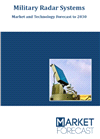The Karlsruhe control center managing German airspace is now handling en-route flights over Germany with the new next-generation iCAS system developed by Indra in collaboration with DFS Systemhaus.
Commissioning this system is the first step by German air traffic control (DFS) in unifying the technology of the systems employed across its control centers. Air service provider from Netherland will also implement this system in its control centre in Amsterdam. DFS is also adopting the same technology that air navigation service providers in the iTEC alliance will employ. Doing so will result in more fluid traffic control and integration in the Single European Sky.
DFS has invested over ten years in developing this system in collaboration with Indra. Placing the system into real operation entailed numerous tests, training courses and operating checks over the last months.

Market Forecasts by Region, Platform, Application, Role, and Component. Market and Technology Overview, Market Dynamics, Scenario and Opportunity Analysis, and Leading Companies
Download free sample pages More informationFinally, this past Saturday, November 11th at 23:36 local time, the system assumed control of its first flight: A FedEx aircraft that was making the journey from Paris to Tokyo crossing through German airspace.
The introduction of the iCAS air traffic management system at the Karlsruhe Upper Airspace Control Center is a great technical step forward. The system provides controllers with the same functionality and aspect as the P1/VAFORIT air traffic system that Indra commissioned back in 2010. However, iCAS reacts more quickly, is much more powerful and even provides the controller with higher-quality traffic images. Doing so will also afford DFS the possibility of rapidly incorporating improvements and new functions for managing airspace more efficiently, while shoring up its capabilities to absorb future increases in the number of flights.
"After implementing the iCAS system at the Karlsruhe UAC control center, we now see how the future for DFS and its European partners in the iTEC project has already arrived," declared Robert Schickling, Managing Director of Operations at DFS. "Incorporating this system has yielded major benefits: a powerful platform on which to build the future, which is an essential requirement for not only implementing SESAR functionalities and having a unified system at all our control centers, but also the economic benefits of cost sharing in the development of a system of this sort with the air navigation service providers in other countries."
DFS is currently partnering with the Dutch LVNL to work with Indra on adapting the iCAS system to the needs of the Munich and Bremen control centers in Germany and the Amsterdam control center in the Netherlands. "Our goal is to have a unified system at all the centers for 2023/2024," added Schickling.
Rafael Gallego, General Manager for European ATM Programs at Indra highlighted "the enormous significance of commissioning this system in Karlsruhe, one of the most important control centers in Europe, within the project's established terms. This milestone marked iTEC's consolidation as the main network of European control centers for deploying Single European Sky functionalities."
Member of the iTEC family
iCAS is a system in the iTEC project (interoperability Through European Collaboration), a project constituting Europe's main alliance for jointly developing and implementing the next generation of air traffic control systems in collaboration with Indra as technology provider.
The goal of the iTEC alliance is to configure air traffic control systems with modules and common standards that are compatible across the different countries. In this regard, DFS is working closely with air navigation service providers from Netherlands (LVNL), Poland (PANSA) and Lithuania (Oro Navigacija). The iTEC alliance also includes United Kingdom (NATS) with its partner AVINOR (Norway) and ENAIRE (Spain).
Indra is the world's bellwether company in the ATM market with projects in over 175 countries. The company's cutting-edge technology manages the most complex airspaces with the most European traffic, and is contributing to make construction of the Single European Sky a reality. Over 200 control centers across the planet operate with the systems of the company, which has deployed more than 400 radars to reinforce security and 1,700 systems to assist navigation backing arrivals at airports and guiding en-route aircraft.